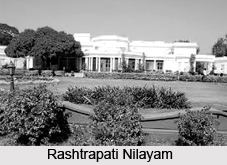 Secunderabad is a city located in the state of Telangana to the north of Hyderabad. It is the capital city of both Telangana and Andhra Pradesh. It is also known as the "Twin City of Hyderabad". The two cities are connected by the road on the bund of the beautiful Hussain Sagar Lake. In recent times, the city of Secunderabad has evolved into one of the most prominent trade and IT centers in southern India and is also a popular tourist destination.
Secunderabad is a city located in the state of Telangana to the north of Hyderabad. It is the capital city of both Telangana and Andhra Pradesh. It is also known as the "Twin City of Hyderabad". The two cities are connected by the road on the bund of the beautiful Hussain Sagar Lake. In recent times, the city of Secunderabad has evolved into one of the most prominent trade and IT centers in southern India and is also a popular tourist destination.
Etymology of Secunderabad
The city of Secunderabad is known after Sikandar Jah, the third Nizam of Asaf Jahi dynasty. It was founded in 1906 AD as a British cantonment. Being one of the largest cantonments in India, Secunderabad has a large army and air force presence. This city was known as "Ulwul", but later was renamed as "Secunderabad".
 History of Secunderabad
History of Secunderabad
Until recently Secunderabad had its own city government and municipality. The area around Secunderabad changed hands between various rulers, and the area was part of Nizam"s Hyderabad by the 18th century. Later, Secunderabad was the area in Hyderabad which was under the direct control of the British. The twin city of Hyderabad and Secunderabad is separated by Hussain Sagar Lake that was built during the reign of Qutb Shahi Dynasty in 16th century.
Demography of Secunderabad
According to the Census of 2001, Secunderabad had a total population of 204,182. The males constitute 51 percent of the population and females 49 percent. Secunderabad has an average literacy rate of 73 percent, which is higher than the national average of 59.5 percent. The male literacy rate is 78 percent, and female literacy rate is 68 percent. About 11 percent of the population is under 6 years of age. The city of Secunderabad has a sizable population of Anglo-Indians who mainly resided in the South Lallaguda area of Secunderabad which was popularly known as "Little England". The languages commonly used are Telugu, Urdu, Hindi and English.
Culture of Secunderabad
Due to the many communities like Parsis, Anglo-Indian and other British native inhabitant, this city was historically cosmopolitan. Though Secunderabad and Hyderabad are referred to as the twin city the structure of the cities are different from each other. The city has many places of worship for people of all faiths. Apart from temples, mosques and churches, Secunderabad is traditionally popular for a Parsi Fire Temple.
 Amenities of Secunderabad
Amenities of Secunderabad
The trade option in Secunderabad was always considered to be profitable as all types of customs duty were exempted. After the Sepoy Mutiny 1857, the construction of a 7 metre high wall was started at Trimulgherry and completed in 1867. The South Central Railway`s zonal head quarter named Secunderabad Railway Station was established in 1874. The Gandhi Hospital which was previously known as King Edward Memorial Hospital was constructed in 1851.
The Rashtrapati Nilayam, was originally constructed in 1860 as the house of the British resident at Hyderabad, is now the official retreat of President of India.
The Secunderabad Cantonment Board came under the jurisdiction of Indian Armed Force after independence. Consequently large military units were established. Begumpet Airport is close to Secunderabad and served both the cities until early 2008.
Tourism in Secunderabad
A large number of historic monuments can be seen around the city. Tourism attractions in Secunderabad include St. Mary"s Church, Andhra Pradesh State Museum, Charminar, Birla Mandir, Victorian Prison, Nehru Zoological Park, Salar Jung Museum, Trimulgherry Fort, Trinity Church and Golconda Fort.



















